Construction has topped out for 7th and Brannan, an affordable housing project underway at 600 7th Street in SoMa, San Francisco. Crews have brought the concrete structure to its 84-foot pinnacle, preparing the future 221 units for a potential opening later this year. Mercy Housing is the project developer.
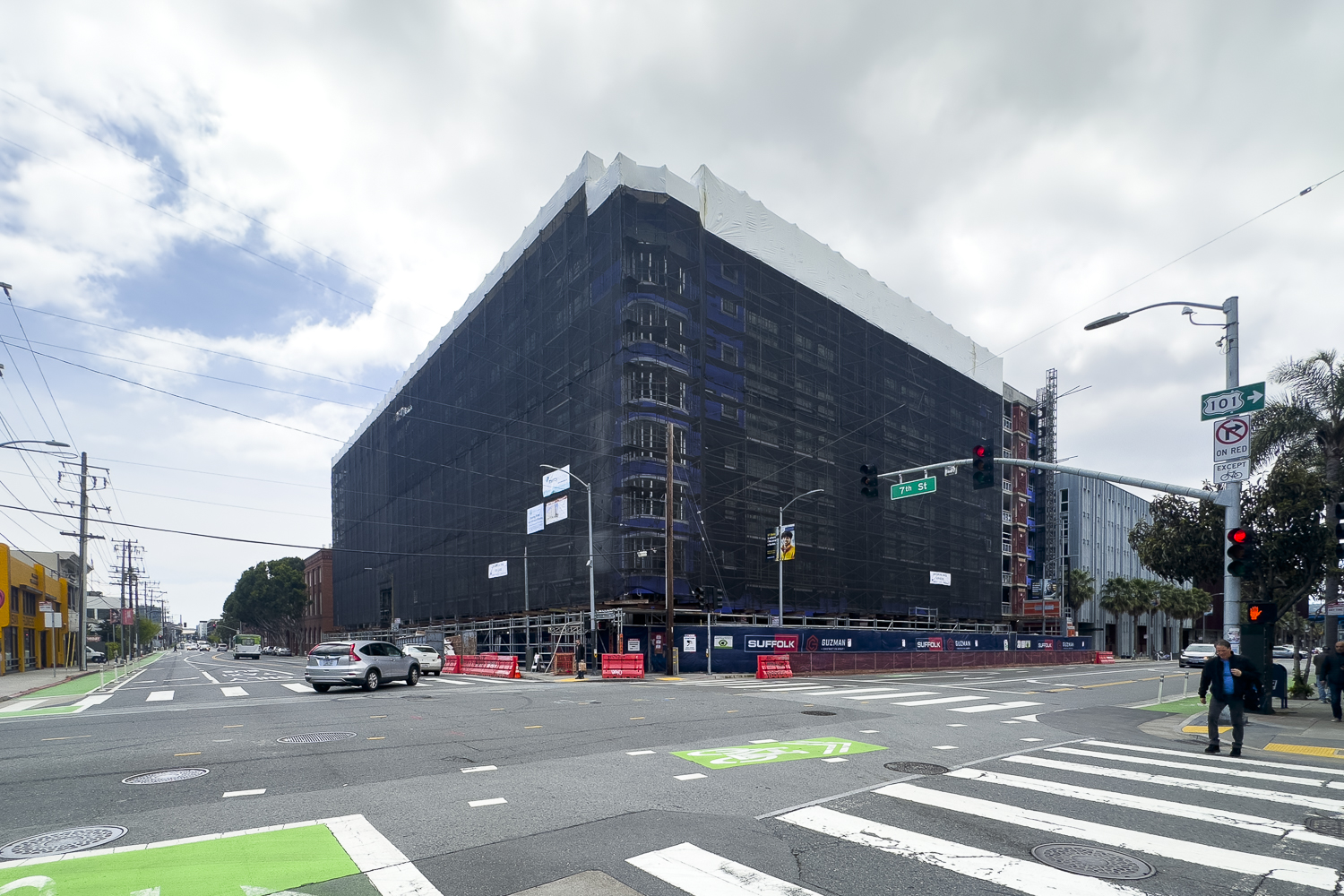
600 7th Street seen from across Brannan Street, image by author
Our site visit came months after YIMBY’s last documented visit when the concrete had passed the fifth floor. Now, exterior work can be seen through the scaffolding with drywall and panels covering the structure, though facade panels were not spotted during our visit.
The 84-foot-tall structure will create 221 affordable units for low-income families and individuals. Unit types will include 100 studios, 23 one-bedrooms, 83 two-bedrooms, and 15 three-bedrooms. Amenities will include an indoor-outdoor communal space, on-site property management, and a staffed 24-hour front desk. Residential services will include five case management staff from the Episcopal Community Services.
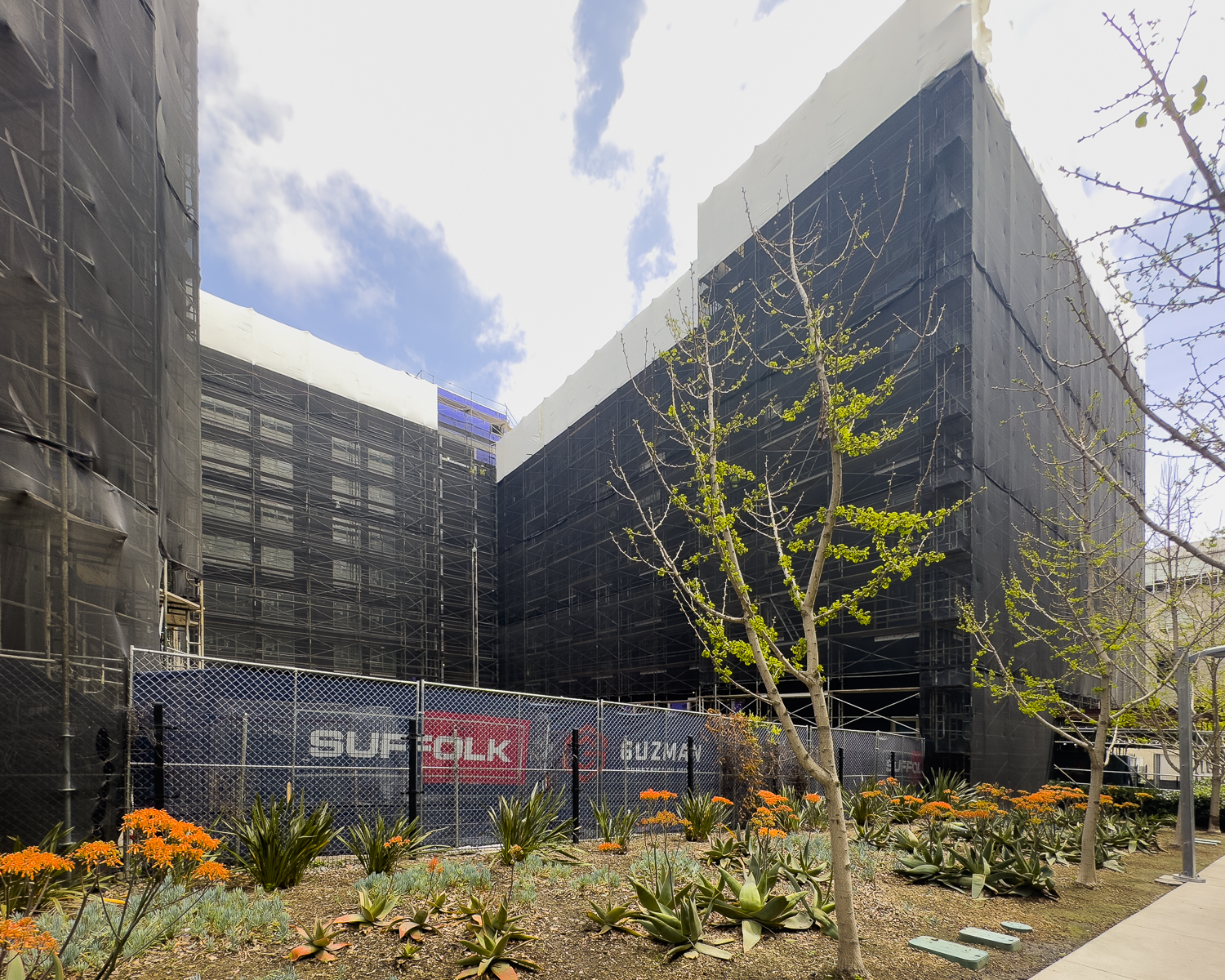
600 7th Street view from the adjacent lot’s open space, image by author
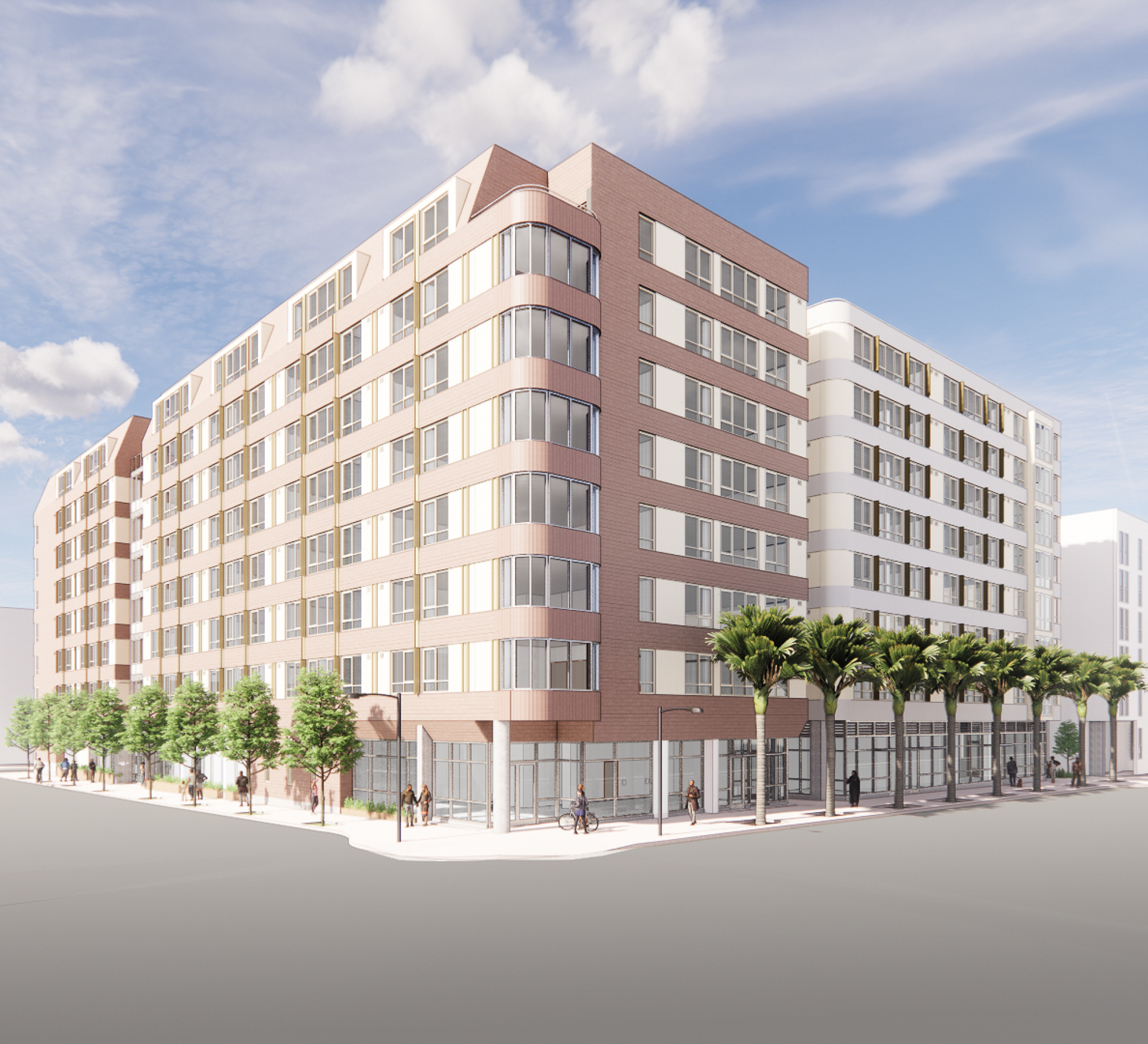
600 7th Street corner view, rendering courtesy Mercy Housing
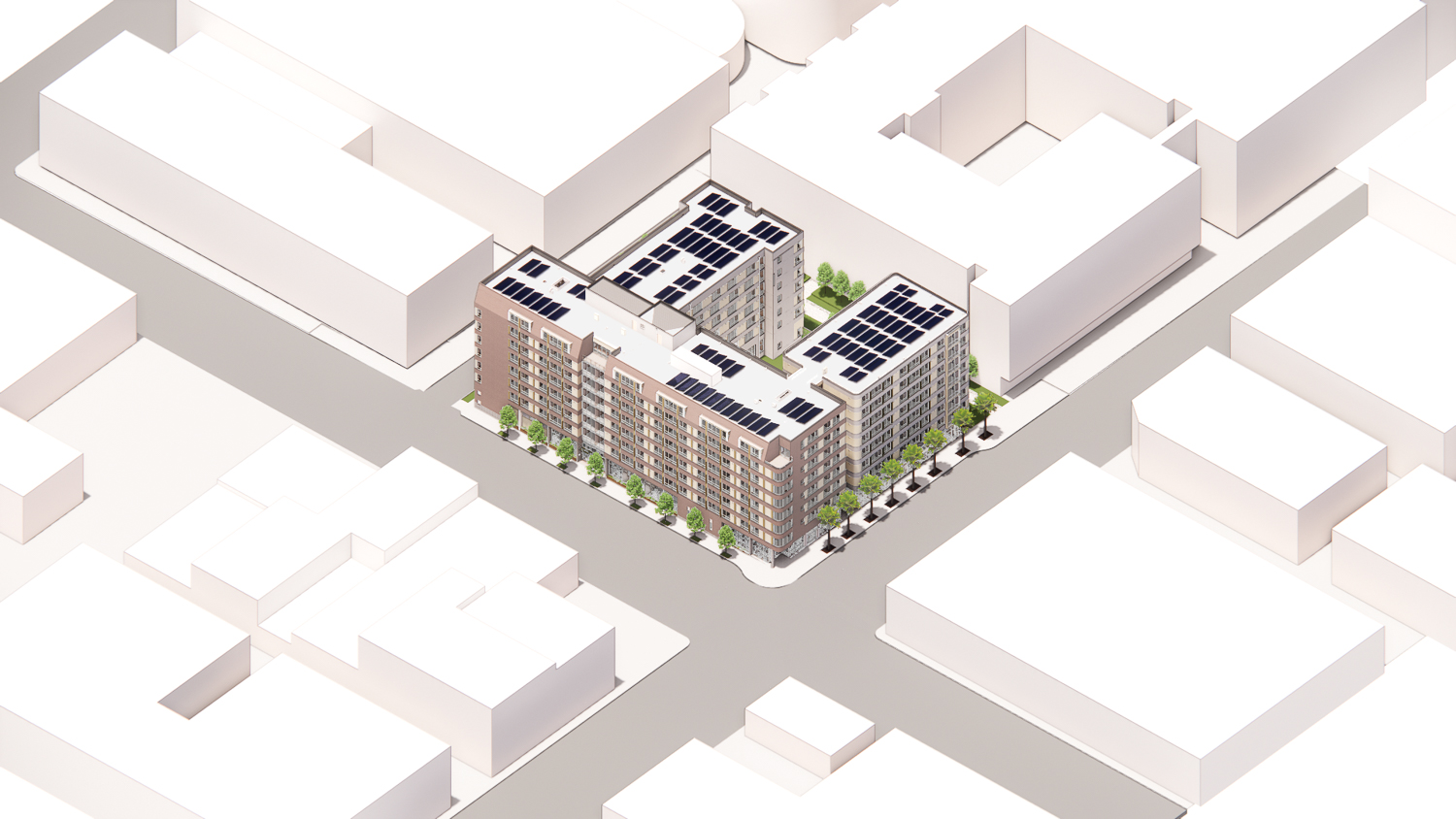
600 7th Street axonometric view, rendering courtesy Mercy Housing
At the base of the structure will be approximately 4,000 square feet of retail space that Mercy hopes to fill with community-serving businesses. According to the project website, there are four spaces that could be leased separately or in combination, depending on prospective tenants.
Santos Prescott and Associates is the project architect, with Cliff Lowe Associates working as the landscape architect, Luk and Associates as the civil engineer, and Mar Structural Design as the structural engineer. Facade materials will include stucco, brick, slats, and smooth panels. Perforated fins will add a decorative flair to the facade, along with semi-diffused shading. The color palette is light, contrasting off-white and grey with terracotta tones.
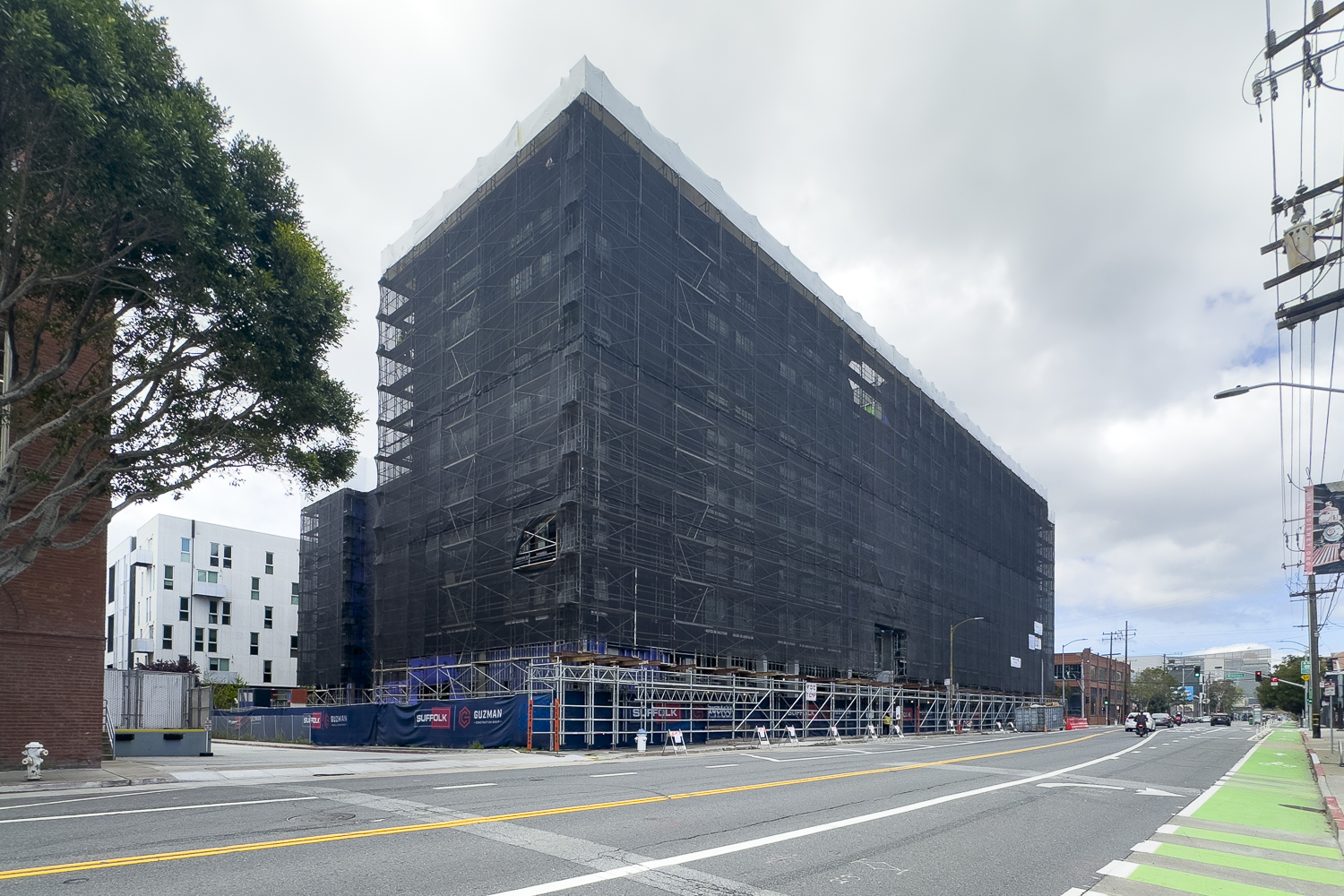
600 7th Street, image by author
Both Suffolk Construction and Guzman Construction Group are general contractors.
Subscribe to YIMBY’s daily e-mail
Follow YIMBYgram for real-time photo updates
Like YIMBY on Facebook
Follow YIMBY’s Twitter for the latest in YIMBYnews

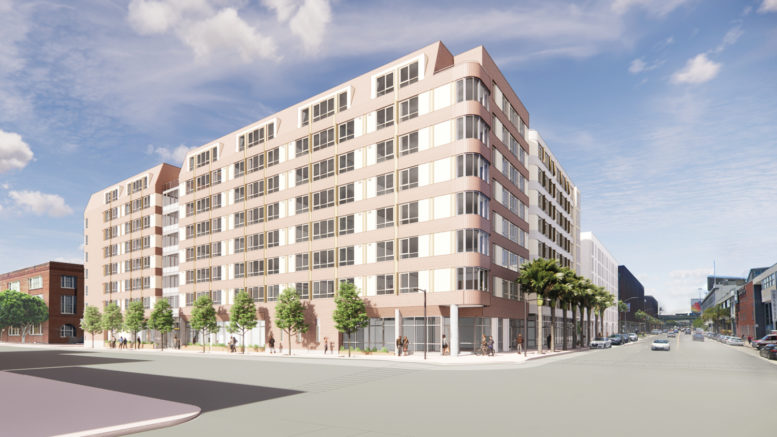

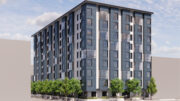


The building appaiers to be fully framed out and nearing completion, what’s the purpose of showing it now? This building has all the making of a east coast crime infested housing project?
“This building has all the making of a east coast crime infested housing project?”
Careful, your “YIMBY” attitudes toward low-income families is showing…
Neither of these comments makes any sense. Frank has a remarkably uninformed view of how modern affordable housing works and why it’s super important. But Mac Truong, I don’t know any YIMBYs who oppose affordable housing – all the YIMBYs I know (myself included) think providing housing for all income levels, especially but not exclusively affordable, is what’s needed to abate the housing crisis.
You may not understand what is meant by a one-line reply, that’s ok.
But just because you don’t understand what is meant doesn’t actually
mean it “makes no sense” as YIMBY pro-dev policies do not inherently
mandate low income housing percentages of new construction, as I’ve
been quick to point out repeatedly (although I didn’t spell it all \
out in that single line reply, true.)
When a 100% low income housing project is built, YIMBY slogans really
have little to do with it. It’s the contrast I was pointing out.
There’s actually very, very little in terms of 100% BMR development.
Don’t let that stop a good slogan-based fundraising campaign though,
pushed by Billionaire developer’s and their cultivated non-profits…
“YIMBYs I know (myself included) think providing housing for all income levels”
-Is the excuse for being satisfied with ~10% or so BMR units in new projects.
The ~90% top-of-market does nothing for the housing crisis where it’s felt.
This is the entire point. (Whoosh.) It’s where YIMBY slogans meet reality.
the 90% top-of-market does quite a lot for the housing crisis, especially if it’s in high quantities. You’re exactly wrong, Mac.
If you don’t build enough high-rent units (as has been the case in SF for ~50 years), the people who desire those units simply bid up rents for everybody else. That’s why the housing crisis is so bad.
“the 90% top-of-market does quite a lot for the housing crisis, especially if it’s in high quantities”
The yuppie excuse slogans reappear. You’re exactly predictable, Wes.
People making 2-3 hundred thousand a year don’t actually experience the housing crisis, they experience the yuppie consumerism crisis. They can afford to move anywhere they want.
World’s tiniest violin playing just for you Wes, and your comfortably wealthy excuses, but no top-of-market housing does nothing for the low income workers except continue to gentrify and drive property values out of their reach. SF rents haven’t fallen that much if at all since the pandemic, they’re going back up again. Not to mention the construction takes YEARS and takes away existing housing/businesses and resets their tenancies to market rates. It’s not like they’re building on empty lots everywhere, think a tiny bit Wes. You can do it, it’s just difficult because obviously YIMBY’s seem to think they’re paid not to consider these basic facts. Everyone worship at the altar of developer money and be sure to tip your local carpetbagger.
Obviously you’re not actually concerned about the people who feel the housing crisis most, as you say “correct that BMR housing likely has a higher impact than market-rate housing” – it has the only impact. More Yuppies don’t help the essential lower incomes stay in their homes, kid.
Lmao Mac you need to stop huffing paint and imagining that every YIMBY is some wealthy tech bro. There’s nothing wrong with inclusionary zoning that mandates affordable housing, but most of these policies are very poorly designed, with mandates that effectively kill all proposals that aren’t ultra-luxury high rises because those are the only projects that are profitable for builders when high numbers of affordable units are mandated. New units are always going to be more expensive than the existing housing stock, especially in a place like SF where local policy failures have made it extraordinarily expensive to build anything. Many of these NIMBY policies are dressed up in the language of environmental and social justice, but have the net effect of hurting low income people by restricting the housing supply to the point where you have to make six figures or be lucky enough to have moved into a rent-stabilized apartment decades ago. I think it’d be great if the government started providing large amounts of social housing by building way more affordable units and purchasing existing ones, but that type of intervention is likely to be much more successful at the state, rather than city level, and also depends on cities making it way easier to build.
Hi. These housing units are great news because they are important to other people who can’t speak for themselves.
Respectfully, I don’t agree that this is or will become a “crime infested housing project”. Mercy housing has a good track record. Public housing with issues from decades prior was neither properly designed (eg, drainage or structural problems) nor properly maintained.
While I hope the affordable housing residents will one day have better jobs and have resources not to need affordable after some time, there are also elderly and disabled who need access to appropriate housing.
Amen and thank you, this is exactly the type of housing project that actually DOES move the needle in the housing crisis – low income housing specifically and entirely.
Yuppie condos look great in the renderings but everyone knows if they’re built on the promise of keeping low-income residents in the region, our necessary workforce, they’re built on lies funded by wealthy development corporations with useful idiots cheerleading their profits all the way.
By contrast, this hits where people live and we need to see much more of it. That someone would immediately first comment associate lower-than-stratospheric-techie-incomes with crime is just more of the Garry Tan BS narrative that “moderate” Billionaires and the associated developers are the saviors of the working class housing crisis, which is just hilarious on its face.
Although you’re correct that BMR housing likely has a higher impact than market-rate housing, market rate housing is the only realistic solution to the housing crisis because it can scale (due to profitiability).
When developers win, landlords lose (more supply). When developers lose, landlords win (less supply; same demand).
“rich guys” will make money off of the housing crisis regardless — at least the developers are making money solving the problem as opposed to keeping prices high.
You’re just worshiping at the altar of developer giveaways.
No Wes, making top-of-market rate housing at the rates and scales it is created will never meet the demand and thus the price will never fall. You’re basically touting trickle-down economics without being aware enough to realize it.
Yuppies don’t need more condos, there are plenty sitting vacant. Stop lying and pretending you’re at all concerned about the lower incomes, because it’s transparent that you aren’t – as much as it is transparent that you don’t understand the complex economics at play in either direction.
“When developers win, landlords lose” -Derp.
When the billing open up
“You’re basically touting trickle-down economics without being aware enough to realize it.”
This is written to sound intellectually astute, but “trickle down economics” is such a different system and so far removed from the actual proven facts of supply and demand that you, in fact, are basically trying to equate an apple to a horse.
Now, supply and demand truly only perfectly operates in a free-flowing and unimpeded market of which the heavily Byzantine-regulated US housing market is most certainly not, but this does not change the fact that supply and demand does in fact govern markets at the macro level.
Take your strawman about trickle-down and try to think a tad deeper…
“but “trickle down economics” is such a different system”
No sh!t sherlock, but people understand the reference and the dynamics are the same : Rich people enriching themselves further while making promises to lower income classes that never come true, the hallmark of YIMBY gentrification and Republican tax cuts both. It’s an apt analogy in fact.
You may not like that the apt comparison is made, but that’s just tough isn’t it.
“supply and demand truly only perfectly operates in a free-flowing and unimpeded market of which the heavily Byzantine-regulated US housing market is most certainly not”
-100% same argument can be made, US economic forces being similarly impeded by regulations and other factors that were created for good reason, which some seek to undermine for theirs.
(Calling something a you don’t understand a strawman is ALSO strawman! :D)
“supply and demand does in fact govern markets at the macro level.”
Which has nothing to do with the conversation because the SF housing market is a microeconomic actor, not some macroeconomic great equalizer. Please think deeper indeed, you almost had an actual thought from start to finish but you got stuck.
There is no housing “crisis.” If there is a relative shortage, it is because of rent control. Since 1979, there has been no incentive to move from an apartment with fixed-rate rents. Everyone knows this, and so people keep the same apartment for decades. This includes the mayor, who makes no secret of living in a rent-controlled apartment even given her $400K salary plus benefits.
Rent control has hobbled the supply-demand concept. We are overbuilding, just as we did with commercial. Nothing will change until rent control is dismantled.